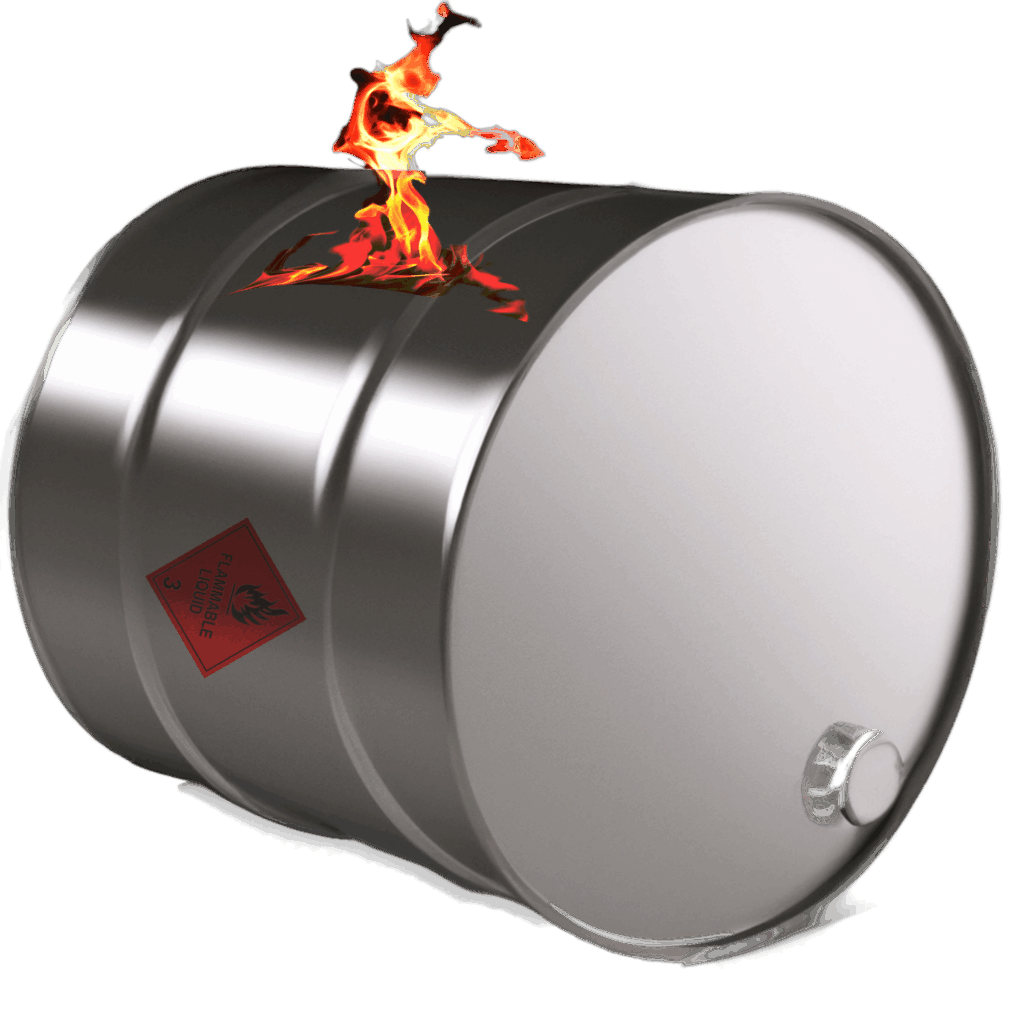The Dangers of Cutting Used Storage Drums That Contained Flammable and Combustible Liquids
Disclaimer: This post is for informational purposes only and should not be considered a substitute for professional advice. Always consult with qualified specialists, such as industrial safety experts or hazardous materials professionals, before handling or cutting used storage drums that have contained flammable or combustible liquids.
Used storage drums, such as 200 L steel drums, are often repurposed for various projects, from DIY furniture to rainwater collection systems. However, drums that previously contained flammable or combustible liquids pose significant safety risks when cut or modified.
Improper handling can lead to catastrophic consequences, including fires, explosions, and serious injuries. This blog explores the dangers of cutting such drums and provides critical safety considerations.
Why Are Used Drums Dangerous?
Drums that have held flammable or combustible liquids, such as petrol, diesel, solvents, paints, or chemicals, may retain residual liquids, vapours, or sludge. Even if a drum appears empty, it can still be hazardous due to:
- Residual Vapours: flammable liquids release vapours that can linger inside a sealed drum. These vapours are often highly flammable and can ignite with a single spark.
- Chemical Residues: trace amounts of liquid or sludge can remain in crevices or seams, releasing flammable vapours when disturbed.
- Pressure Build-Up: temperature changes or chemical reactions inside the drum can cause pressure to build, increasing the risk of an explosion when the drum is cut.
- Unknown Contents: drums may lack proper labeling, making it difficult to know what substances they contained or their associated risks.
The Risks of Cutting Used Drums
Cutting a drum that once held flammable or combustible liquids can trigger several dangerous outcomes:
Fire and Explosion: cutting tools, such as angle grinders, plasma cutters, or torches, produce sparks or heat that can ignite residual vapours or liquids. This can result in a fire or explosion, endangering the operator and anyone nearby.
Toxic Fume Exposure: cutting may release toxic vapours from residual chemicals, posing health risks such as respiratory irritation, dizziness, or long-term harm.
Physical Injury: an explosion or fire can cause severe burns, shrapnel injuries, or even fatalities. The force of an explosion can propel drum fragments at high speeds.
Environmental Contamination: improper handling may lead to spills of hazardous residues, polluting soil, water, or air.

Incidents involving used drums are not uncommon. There are unfortunately more than one story, where a worker was fatally injured when cutting into a drum that had previously contained flammable liquids. The drum exploded due to ignited vapours, highlighting the need for proper safety protocols. Similar accidents have been reported globally, often due to a lack of awareness or failure to follow safety guidelines.
Safety Considerations Before Cutting Drums
To minimise risks, consider the following precautions. However, these steps should only be performed by trained professionals with appropriate equipment and expertise:
- Identify the Drum’s Contents: verify what the drum contained using original labels, safety data sheets (SDS), or by contacting the supplier. If the contents are unknown, assume the drum is hazardous.
- Proper Cleaning and Decontamination: drums must be thoroughly cleaned to remove all residues and vapours. This may involve triple-rinsing with appropriate solvents, steam cleaning, or using specialised cleaning services. Cleaning must comply with local regulations.
- Ventilation and Vapour Testing: ensure the drum is fully ventilated, and use a combustible gas detector to confirm the absence of flammable vapours before cutting.
- Use Safe Cutting Methods: employ cold-cutting techniques, such as pneumatic shears or manual saws, to avoid sparks. Never use heat-generating tools like torches or grinders unless the drum is certified safe.
- Personal Protective Equipment (PPE): wear appropriate PPE, including flame-resistant clothing, gloves, eye protection, and respiratory protection if needed.
- Work in a Safe Environment: perform cutting in a well-ventilated area, away from ignition sources and flammable materials. Follow local fire and safety codes.
- Regulatory Compliance: adhere to regulations governing hazardous materials.
The Importance of Professional Guidance
Cutting used storage drums is inherently risky and should not be attempted by untrained individuals. Specialised companies offer drum cleaning, testing, and reconditioning services to ensure safety. Always consult with professionals who are trained in handling hazardous materials and have the necessary equipment to mitigate risks.
Conclusion: while repurposing used storage drums can be a cost-effective and creative endeavour, the dangers of cutting drums that contained flammable or combustible liquids cannot be overstated. The risk of fire, explosion, or toxic exposure makes it critical to prioritise safety. Always seek professional advice and services to ensure the drum is safe to work with. By taking the proper precautions and consulting experts, you can avoid potentially life-threatening accidents and ensure a safe working environment.
This post is intended to raise awareness about the risks associated with cutting used storage drums. It is not a comprehensive guide or a substitute for professional training or advice. Always consult with qualified specialists before undertaking any actions involving potentially hazardous materials.
